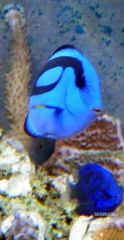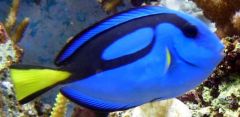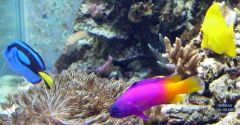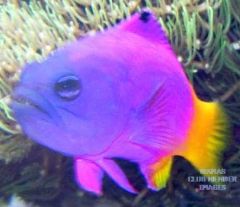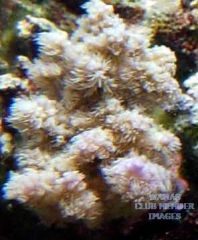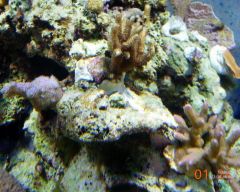
Rascal
BB Participant-
Posts
1,355 -
Joined
-
Last visited
Content Type
Profiles
Forums
Gallery
Events
Store
Everything posted by Rascal
-
From the album: 150 Reef (8/06 - 2/07)
pic -
From the album: 150 Reef (8/06 - 2/07)
pic -
From the album: 150 Reef (8/06 - 2/07)
pic -
From the album: 150 Reef (8/06 - 2/07)
pic -
From the album: 150 Reef (8/06 - 2/07)
pic -
From the album: 150 Reef (8/06 - 2/07)
pic -
From the album: 150 Reef (8/06 - 2/07)
pic -
From the album: 150 Reef (8/06 - 2/07)
pic -
This tank was featured in Paletta's Ultimate Reef Aquariums book, I think soon after it was set up, and then again more recently here: http://www.wetwebmedia.com/ca/volume_3/cav...at_atlantis.htm. Pretty cool to see the growth & development over time. Would love to see it in person some day.
-
Ditto. That goes for Ca & Alk too.
-
Get used to calling "him" "her".
-
I doubt I could ID it, but I'm sure someone on this board could . . . if you have post a picture that is. In the meantime, try here: http://www.algaebase.org/
-
Easy way to remove A LOT of coralline algae?
Rascal replied to inedukated's topic in General Discussion
It's nothing more than diluted Hydrochloric Acid. Lots of folks have used it to clean deposits off of pump parts. Works great and I've never heard of anyone having a problem after putting stuff back in the tank. Does a better job in minutes than vinegar does in hours. Only issues are safety. Splash some vinegar in your eye and it'll make you cry. Splash some of this stuff in your eye and you could be in trouble. Nothing that rubber gloves and safety goggles can't stop though. Here's a good primer on safe use/handling/disposal: http://www.naturalhandyman.com/iip/infxtra/infmur.shtm If interested you can find in HD or Lowes -- as a concrete cleaner. -
I have also used the water bottle trap, with the top cut off and then inverted back into the bottle. This makes kind of a "cone" that the fish swim into but have a hard time getting out. Upside is you could use a bottle small enough so that your bigger fish wouldn't be able to fit. Downside is you may still end up pulling out most of your fish before you catch the one you want. Knowing that the damsel likes clam meat should help.
-
Emerald crabs for sure. My Yellow Tang loved it, not sure if all do.
-
I was there yesterday and he does have a ton of stock. Lots of nassarius, astrea and margarita snails, also hermits and other herbivorous/detrivorous crabs, if I remember right. The fish selection is very good right now too. For those who haven't been out there in a while, he has significantly expanded his operation and there are a lot more fish & corals to choose from. Definitely worth the trip. Personally I would be wary of ordering anything online right now just b/c of the weather.
-
No to the first and yes to the second. The glass will work as a greenhouse - trapping infrared radiation (i.e.--heat) inside your tank. It will also decrease the amount of air movement over the top of your tank, lessening both gas exchange and evaporation. End result -- a hotter tank, among other things. If you don't want a hood, just mount your light fixtures over the open tank top.
-
Easy way to remove A LOT of coralline algae?
Rascal replied to inedukated's topic in General Discussion
White vinegar. 4" wide razor paint scraper. -
Someone should ask a lawyer. Here's my CYA statement: this is NOT my area of expertise and I am not licensed to practice law in South Carolina, but the practice of law is not exactly rocket science and anyone who can understand grammer and use a search engine can easily figure this stuff out. I think Jason was on the right track. Here's the definition of live rock according to 50 CFR 622.2 Definitions and Acronyms: "Live rock means living marine organisms, or an assemblage thereof, attached to a hard substrate, including dead coral or rock (excluding individual mollusk shells)." 15 CFR 922.162 (dealing specifically with the Florida Keys but it's a more exhaustive definition so I've included anyway) : "Live rock means any living marine organism or an assemblage thereof attached to a hard substrate, including dead coral or rock but not individual mollusk shells (e.g., scallops, clams, oysters). Living marine organisms associated with hard bottoms, banks, reefs, and live rock may include, but are not limited to: sea anemones (Phylum Cnidaria: Class Anthozoa: Order Actinaria); sponges (Phylum Porifera); tube worms (Phylum Annelida), including fan worms, feather duster worms, and Christmas tree worms; bryozoans (Phylum Bryzoa); sea squirts (Phylum Chordata); and marine algae, including Mermaid's fan and cups (Udotea spp.), corraline algae, green feather, green grape algae (Caulerpa spp.) and watercress (Halimeda spp.)." And finally, South Carolina Code 50-5-15 section 30: (30) "Live rock" means living saltwater organisms or an assemblage of them attached to a hard substrate including dead coral or rock . Living saltwater organisms associated with hard bottoms, banks, reefs, and live rock include, but are not limited to: (a) sea anemones (Phylum Cnidaria: Class Anthozoa: Order Actinaria); (b) sponges (Phylum Porifera);
-
Thanks for the reply. It hasn't lost coloration. If anything, both of them have gotten a little more of that reddish/purple color to their tips (the color doesn't quite show as well in the pictures). It seems to want to eat, but the clown has figured out that whatever the anenome gets is easy pickings, so I haven't seen it successfully eat anything in months. I don't think it is going to split. The two of them used to be the same side, but the one without the "hump" has been slowly but steadily growing, while the "humpy" one stays the same size. After looking at some other pictures though, I do think the "hump" has grown since October. I guess that's why I'm concerned.
-
How long have you had it? How long has been that high in your tank? How much light do you have on it? Have the polyps always been retracted like that? Reason I ask is mine looked like yours (minus the tissue loss - but the same color and lack of PE) when I first bought it, then started to get spots of necrosis (although not as quickly or widespread as you are experiencing). I experimented with placements and, like CaribbeanJake said, I found that it did best on the bottom of the tank facing into moderate flow. Once in its "happy place" it started extending its polyps almost all the time and became nice and fleshy looking. It recovered lost tissue very quickly - less than 1 month. Here it is after 2 1/2 years: In Oct: Now: Under Actinics: If it was doing fine where it was until recently than I would look to other factors, but if not you might try moving it and seing how it reacts after a day or so. Oh, and be sure to gently blow any detritus/dead tissue off of it with a turkey baster a couple of times a day. If it recovers it will take care of this itself w/ mucus. HTH
-
Didn't want to jack the other thread, but it prompted me to post about my own BTAs. As you can see from the pictures, one of them has . . . I don't know how to describe it other than it looks like it's "stomach" is partially inside out. See for yourself: The two BTAs pictured are clones. It split right after being transferred to this tank in August - my guess was in response to the stress. I feed on average one or two times a week, sometimes small bits of mussel or squid, sometimes directed squirts of mysis, but the one on the left always gets "poached" by one of my percs -- it just doesn't seem to be able to close up around the food and defend itself well enough. At first I thought it was a goner, but there really hasn't been any change at all in the last 3-4 months. No better, no worse, no growth, no wandering. Here's a close up (yes, I'm having way too much fun with this photobucket thing!): Anyone ever seen anything like this? Any thoughts/advice?
-
Been there. What I eventually realized was that the epoxy doesn't really "glue" things, in the sense of sticking them together, it just hardens into whatever shape you make it. It works much better if the frag plug is kind of embedded into the epoxy, so the epoxy is wrapping around the edges a little, and then you mash the epoxy into some nooks and crannies in the rock on the tank. I also use a little bit of super glue b/n the epoxy and the frag plug. I have found more success when I don't skimp on the amount of epoxy, so there is enough to really work it into those nooks and crannies, but not so much that the coral won't eventually be able to encrust over it. If you stick a couple of small shells/rubble into the epoxy before it hardens, it will diminish the unsightliness of the putty before the coraline takes over, which really doesn't take that long anyway. HTH
-
My suggestions: kalk paste in a syringe -- just do a few at a time and monitor params. I use the syringe that comes with the salifert ca&alk test kits, and try to use just a small amount right in the center of the polyp. This seems to work better than trying to coat the whole thing. You have a 180, right? Five small squirts of kalk a day shouldn't have much of an impact, at least nothing that couldn't be offset in other ways.
-
From the album: 150 Reef (8/06 - 2/07)
pic


